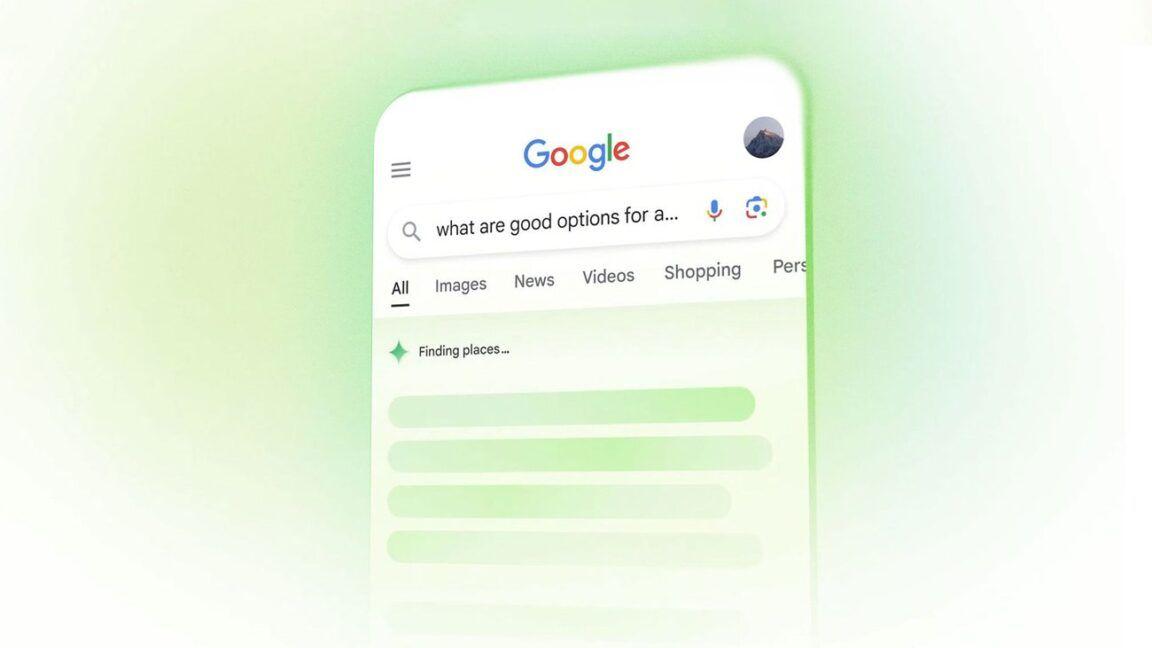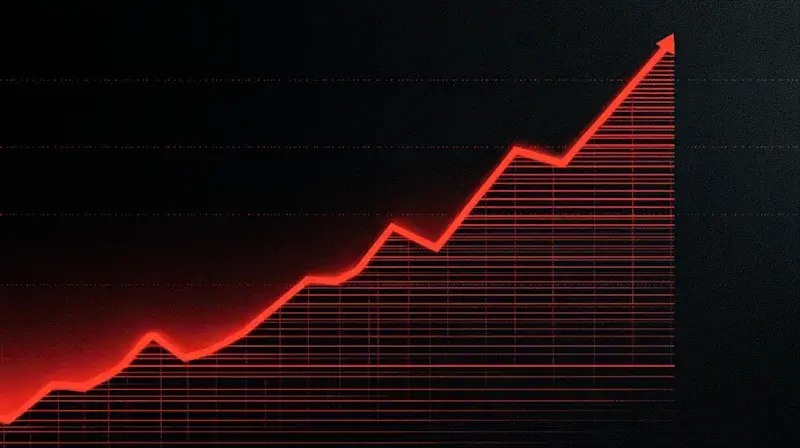Google Discover Introduces AI-Generated Summaries, Raising Concerns for Publishers
13 Sources
13 Sources
[1]
Google Discover adds AI summaries, threatening publishers with further traffic declines | TechCrunch
As publishers fret about decreased traffic from Google, the search giant has begun rolling out AI summaries in Discover, the main news feed inside Google's search app on iOS and Android. Now, instead of seeing a headline from a major publication, users will see multiple news publishers' logos in the top-left corner, followed by an AI-generated summary that cites those sources. The app warns that these summaries are generated with AI, "which can make mistakes." The feature is not yet appearing for all news stories within the Google app, indicating this change is likely still a test. (Google has been asked for comment about the extent of the rollout, but has not responded.) In tests, TechCrunch was able to view the AI summaries firsthand across both iOS and Android apps in the U.S. In addition to the summaries, Google has been trying out other ways to present the news displayed in Discover. Though not flagged as powered by AI, some stories will include a set of bullet points below the headline or will be grouped with similar news. For instance, a story about President Trump's Ukraine deal also included links to other stories about Trump's latest actions. Meanwhile, a story from The Washington Post about ICE was followed by bullet points that summarized the story's content. The update to the search app comes as a number of publishers have been experimenting with AI on their own sites, including The Wall Street Journal, Yahoo, Bloomberg, USA Today, and others. Startups, too, have gotten in on the action, as with Particle, a news reader that uses AI to not only summarize stories but also allow users to see different sides or ask follow-up questions to better understand the topic covered. Despite these trials, there's significant concern in the publishing industry about how the shift to AI is impacting website traffic and referrals. With features like Google's AI Overviews and AI Mode, users no longer have to visit a website directly to get answers to their search queries -- it can be summarized for them automatically or shared in a chatbot-style interface. Outside of Google, this same trend is seen across other AI apps, like ChatGPT or Perplexity. Recently, Google tried to appease publishers with the launch of Offerwall, a feature that allows publishers to generate revenue beyond the more traffic-dependent options, like ads. With Offerwall, publishers who use Google Ad Manager can try out different methods to provide access to their content, like micropayments or having users take surveys, sign up for newsletters, watch ads, and more. But for many publishers, these tools are coming too late, as traffic is already in a steep decline. A story by The Economist this week noted that worldwide search traffic fell by 15% year-over-year as of June, citing data from market intelligence company Similarweb. Earlier data from the firm also found that the number of news searches on the web that result in no click-throughs to news websites had grown from 56% in May 2024, when AI Overviews launched, to nearly 69% as of May 2025. Organic traffic also declined, dropping from over 2.3 billion visits at its peak in mid-2024 to fewer than 1.7 billion, it noted. Amid this shift, Google Discover still remained a source for clicks, even as traffic from Google Search declined. But that may no longer be the case if the AI summaries roll out more broadly within the Google app.
[2]
Google's Discover page now summarizes news with AI
Jess Weatherbed is a news writer focused on creative industries, computing, and internet culture. Jess started her career at TechRadar, covering news and hardware reviews. Google is rolling out AI-generated summaries directly within Discover, its personalized news feed nestled within the Google Search app. TechCrunch reports that some users in the US are seeing Discover cards on iOS and Android that provide the new summaries in place of a headline and logo from a single publisher, similar to how AI Overviews appear at the top of results in Search. It acts to further obscure news sources at a time when search traffic to publishers is disappearing. The AI summaries in Discover display overlapping icons in the top-left corner, indicating the number of cited stories. Tapping the icons reveals a "More" sheet with all the contributing articles. Users get a quick three-line preview before needing to tap "See more" to expand the summary. A prominent warning is displayed underneath the text disclosing that the summaries are generated with AI, "which can make mistakes." This feature appears to have been in development for a while. Google bug hunter AndellDam found that trending cards with AI Overview-like summaries were being tested on Google Discover in June. A Google spokesperson confirmed to TechCrunch that this is not a test, but a US launch on iOS and Android. Google told the publication that the feature will focus on trending lifestyle topics like sports and entertainment, and aims to make it easier for people to decide what pages they want to visit. This is the latest of several AI features Google has been toying with that discourage users from clicking on web links, following AI Overviews, Audio Overviews, and AI Mode being tested in Search. This is cause for concern across the publishing industry, which has seen a dramatic fall in website traffic and referrals now that AI is pulling information out of articles and negating the need for readers to click through to original sources. That loss of traffic and revenue from Google Zero has already contributed to killing sites like AnandTech, Giant Freakin Robot, Laptop Mag, and Buzzfeed News -- reducing the pool that Google can feed to its AI.
[3]
Google Discover Experiments With Story Summaries Using Its AI
Another day, another AI change from Google. Now, Google Discover is the latest service to get AI features with the company testing story summaries that look similar to how AI Overviews now appear at the top of search results. Spotted by 9to5Google, the new feature is in testing for select users as PCMag was unable to replicate the functionality. AndellDam on X also found similar testing back in June, so this has been in the works for a while. The AI-generated overviews within Discover appear in the feed alongside normal editorial highlights. The main test replaces the publication's logo and name from the top left of the Discover card, and instead includes the icons of multiple sources. It uses the word "Trending" to distinguish these overviews from articles. These summaries are pulling together information from multiple publications and online resources. It's then followed by three lines of AI-generated text using information from those sources. There's also a "See more" button to show an extra three lines of text. The main editorial source is then included as the main link for you to click through to learn more. In an example found by 9to5Google, the AI summary used a blog post from the NASA website as its main source. That's where the main image and headline were taken from in this example, too. You can open up all of the sources included if you press on the "More" button within the card. There's also a disclaimer that says, "Generated with AI, which can make mistakes," but this doesn't show until you've pressed "See more." Google has previously tried to summarize topics with multiple sources, but this is the first time it has implemented AI to do it. The previous feature grouped together three articles on the same topic into boxes called "Headlines." The idea was to give you access to three competing sources, which is especially helpful to give you alternative opinions around political content. The test outlined above isn't Google's only experiment with AI in Discover. AndellDam also found a version in testing that gave an AI summary of a single article, rather than grouping together multiple sources. To do this, Google has moved the publication name to the bottom of the card and made the headline much smaller. These tests appear on both the Android and iOS versions of Discover. There's no sign of the feature coming to desktop, which is a relatively new addition to Chrome. Elsewhere in Google Discover, there's also an experiment for a new Save icon to help you keep track of sources to return to later. There's now a small bookmark icon in these tests sitting between the overflow menu and the heart. Everything you've saved through this tool will then be available within the Activity section.
[4]
Google adds AI-generated summaries to Discover
This is the latest in a string of AI tools from the search giant. Google is bringing AI‑generated summaries to Discover, the personalized stream of articles and videos found in the Google app curated based on a user's interests. The search giant remains undeterred by the of AI Overviews, or what it might whose content largely makes up Google's search results. that some Android and iOS users in the US are seeing cards containing AI‑generated summaries on their Discover page. These cards appear with news sites' logos in the top left of the card, with an accompanying snippet that is presumably generated from the body or headlines of those publishers' content. When users tap "see more," the card expands to show all the contributing articles for the summary. Each summary card carries a warning that it was generated by AI, which it notes "can make mistakes." A Google spokesperson that this is a US launch of a new feature, not a test. The feature will first focus on trending lifestyle topics like sports and entertainment. In speaking with TechCrunch, Google claimed the summaries would make it easier for people to decide which pages they want to visit, though that Google's AI tools are tanking clickthrough traffic. Some estimates say as many as 64 percent of search results that include AI Overviews . Google has been aggressively rolling out AI‑powered features. Tools like , and represent, in part, Google's determination to maintain its user base in the face of would‑be search‑engine replacements like ChatGPT. The pace of this new rollout was not made clear.
[5]
Google Discover is trying out AI to give you the gist of articles
Google has been steadily weaving generative AI into its core products, especially Search. Sure, the AI Overviews had a rocky start in the US, but they've since gone global, rolling out to over 100 countries by the end of last year. Meanwhile, AI Mode, which started out with limited access, got a wider release in June through Google Labs. Now, it looks like Google is bringing these AI-powered summaries to other places too, like the Discover feed. Related This new Google Discover format could destroy clickbait An easy solution Posts As spotted by 9to5Google, the Discover feed is getting a bit of a facelift. Instead of just showing one outlet's logo and name, you'll now see a stack of overlapping icons in the top-left corner of some cards, with each one representing a different source used to create the summary. Tap on them, and a "More" panel pops up, giving you a full list of the articles that fed into it. This move seems to have kicked off back in early June. That's when DiscoverSnoop, an analytics platform, spotted Google running tests with AI-generated summaries in the Discover feed, but only for video content at first. In those early tests, certain videos came with a short AI-written blurb sitting right above the thumbnail. Users got a quick peek with three lines, and if they were curious, they could hit "More" to see the rest, which ran about 10 lines long. It looks like this is still the case in the latest version being tested. 9to5Google noticed that users now see a three-line snippet before needing to tap "See more" to get the full summary. At the bottom, there's a small but important reminder: "Generated with AI, which can make mistakes." The preview image comes from the first story in the bunch, with its headline right underneath. Close Pulling from Google's experimental AI Overviews system These AI-generated summaries look like they're tapping into Google's experimental AI Overviews system -- the same one that's had a bit of a bumpy ride in Search lately. Whether this ends up being genuinely helpful or just adds another step between you and the real article really comes down to how sharp Google keeps the summaries. These AI summaries have popped up on both Android and iOS, and they come with an upgraded bookmarking setup. According to 9to5Google, Discover is testing a built-in "Save" icon right on the card, sitting between the heart and the three-dot menu. It's a small tweak, but it cuts out an extra tap. Anything you save ends up in the Activity tab, making it easier to find stuff later without digging around. Related AI Mode is getting a front row seat on the Google app There's finally a new home for AI Mode Posts
[6]
Google Discover testing AI story summaries
Google is testing AI-generated summaries in the Discover feed on Android and iOS, as well as easier bookmarking. Instead of a single publication logo and name in the top-left corner of the card, Discover shows several overlapping icons to represent how many stories were used to generate the summary. Tapping opens a "More" sheet with all those articles. You get three lines of text before you have to tap "See more." The very last thing notes how it was "Generated with AI, which can make mistakes." This experience, especially the highlighting of key information, feels very similar to AI Overviews in Google Search results. The cover image is from the first story, with its headline appearing underneath. The publication name is even smaller than the title alongside the time/date. From a browsing experience, this gives you more information and context before having to tap into an article. However, that extra information might have the adverse effect of users not clicking on the article. As of this test, Google Discover's AI summaries appear alongside the existing solo article format. Meanwhile, Discover is also testing adding the "Save" icon directly to the card. Appearing in between the heart and overflow menu, this saves you a tap, with your bookmarks appearing in the Activity tab. AI summaries and the elevated save icon are still being tested and not widely available. We're seeing it on both Android and iOS (Google app).
[7]
Google is rolling out AI overviews on Discover -- here's everything you need to know
Google is on a mission, adding AI to every corner of its services. And while these features cover every imaginable trick up AI's sleeve, the company seems to have a favorite -- AI overviews. The tool scans through content that comes up under a search term, summarizing it into a nice, easy answer for a user. It first appeared in Google search in the U.S., then followed for hundreds more countries, and then appeared in places like YouTube more recently. In the next step of Google's AI overview rollout, the technology is now coming to Google's Discover feed. First identified by 9to5Google, it appears that the Discover feed is beginning to test out this new technology. In screenshots taken by 9to5Google, it shows an article from NASA about an upcoming mission to space. Above the article is a short summary of the news, with a message stating "Generated with AI, which can make mistakes". It also shows a list of news providers that have covered this topic and have been included in the summary by Google. This feature isn't appearing on all news stories within the Google app, but it does appear to be rolling out at random for users in the U.S. Google has confirmed that this not a test but an official launch of the product. It will first show in the U.S. on both iOS and Android, mainly focusing on trending lifestyle topics including sport and entertainment. However, as this is still the early stage, it is currently unclear how often these overviews will actually appear. Across all of these AI overview rollouts, there has been increasing concern from publishers about traffic being moved away from their pages. The same was said with YouTube creators when the AI overview rolled out there. Google has tried to soften this slightly with the launch of Offerwall. This is a feature that lets publishers give their sites' readers a selection of ways to read their content. This can include micropayments, taking surveys, watching ads, and more. This, according to Google, will allow publishers to have more control over how they make money. However, as recently noted by The Economist, worldwide search traffic is already down by 15% year on year. While this change to Google Discover will bring ease for a lot of users skimming through stories, it will also likely worsen the traffic issues being seen for publishers.
[8]
Google AI Overviews are officially populating the Discover feed
AI Overviews expands to the Discover feed on Google's mobile app. Credit: Silas Stein / Picture Alliance / Getty Images Google's AI-generated summaries have claimed another piece of search territory: the Discover feed. Google confirmed to TechCrunch, which first spotted the change, that AI Overviews are rolling out to the news feed on the Google app for iOS and Android. We also spotted a few AI Overviews on the Discover feed when testing it out on the iOS app. Typically, the personalized news feed shows headlines of stories from a variety of outlets, curated by your search history. In the instances we found, AI Overviews present a summary of a news story that's been covered by several outlets, indicated by the publisher logos in the upper left-hand corner. Clicking into the module shows a list of the different stories. The launch of Overviews in the Discover feed joins of the growing list of places in Google Search with AI-generated summaries directly on the page. It started with summaries at the top of the search page, with very mixed results, and has grown to include summaries in the People Also Ask (PAA in SEO terms) section of search results. During Google I/O 2025, the company said its AI Overviews now reach more than 1.5 billion people per month. More recently, Google introduced AI Mode, an alternative to traditional search that provides answers through an AI chatbot powered by the Gemini model. While Google continues to minimize reports that its generative AI features are negatively impacting publisher traffic, many publishers are seeing ongoing losses. The Wall Street Journal, Bloomberg, and others have reported a significant decline in organic search traffic, as have other major news outlets and even independent bloggers. A 2025 analysis from SimilarWeb had similar findings, reporting a 26 percent decrease in organic search traffic since the launch of AI Overviews. A Google spokesperson told TechCrunch that AI Overviews in the Discover feed is launching in the U.S. and will focus on lifestyle topics like sports and entertainment. That said, the AI-generated summaries we found were about hard news topics like the BBC's documentary about the war in Gaza and Mike Waltz's Senate confirmation for his UN ambassadorship. Google did not immediately respond to request for comment on which topics will be summarized by generative AI.
[9]
AI Is Slitting the Throat of the Journalism Industry
In the latest instance of Google discouraging users from clicking on links, the search giant has launched a new feature that uses AI to summarize trending news stories. As first reported on by TechCrunch, the AI summaries are appearing for users in the US inside Google's main mobile search apps on iOS and Android under the main Discover news feed. Tiny logos of publishers appear in the upper left-hand corner, haphazardly reminding users of where the information actually came from. Underlining the janky nature of the tech, large text under the summary warns that it was "generated with AI, which can make mistakes," seemingly in an attempt to preempt blowback of the type that Apple received after it rolled out a similar news-summarizing feature that turned out to hallucinate wild misinformation. A Google spokesperson confirmed to TechCrunch that the change represented an official US launch, and will focus on trending lifestyle topics, including sports and entertainment. However, in Futurism's own testing, the feature eagerly summarized a story about two merging supermassive black holes, which decidedly doesn't fall under the "lifestyle" category. We reached out to Google for clarification, but didn't receive a response by press time. It's a worrying development for the news industry, which is already reeling from greatly reduced traffic from the search giant. Last month, the Wall Street Journal reported that news sites are being starved by Google's AI Overviews feature, which effectively eliminates the need to click on links in search results by paraphrasing content within search results. While some publications have opted to sign lucrative partnerships with AI companies such as OpenAI, the industry is already feeling the hurt as the AI industry ingests its work and feeds it back to users with a disregard for accuracy, copyright, and media revenue. In that context, the publishing industry's woes could soon take a turn for the worse now that Google is actively dissuading users from clicking through to human-written journalism inside the Discover feed. With plummeting referrals, business models such as relying on display ad revenues and user subscriptions are on shaky ground. Could we be standing at the precipice of what The Verge's Nilay Patel called "Google Zero": a point at which Google gives up sending traffic to publications altogether by answering all questions with AI? The news industry is already being starved of traffic, forcing publications to scale down significantly. Case in point, Business Insider was forced to lay off 21 percent of its employees earlier this year, with CEO Barbara Peng citing "extreme traffic drops outside of our control." Making matters worse is the tech's tendency to hallucinate factual claims. Google has repeatedly caught flak for its AI Overviews feature, which has consistently misled users and given head-scratching answers that can seem to be plucked from a parallel universe. In other words, it's almost certainly only a matter of time until Google's Discover feature will bungle facts and mislead users about what's happening around the world -- a predicament the tech giant seems to be painfully aware of, even as it doubles down on the tech at all costs.
[10]
Google's AI summaries are now taking over your news feed
Google has initiated the rollout of AI summaries within Discover, the primary news feed integrated into its search application for both iOS and Android platforms, impacting how users access news content. This new feature replaces traditional headlines with an AI-generated summary, augmented by the display of multiple news publisher logos in the top-left corner, indicating the sources cited. A disclaimer within the application states that these summaries are generated by AI and "can make mistakes." TechCrunch observed these AI summaries firsthand on both iOS and Android devices in the U.S. A Google spokesperson confirmed this is a U.S. launch, not a test, specifically targeting trending lifestyle topics such as sports and entertainment on iOS and Android. Google also indicated that this feature aims to streamline user decisions regarding page visits. Beyond the AI summaries, Google has been implementing other methods for presenting news within Discover. Some stories feature bullet points below the headline or are grouped with related news, although these are not explicitly identified as AI-powered. For instance, a report concerning President Trump's Ukraine deal included links to additional stories about his recent activities. Similarly, a Washington Post article on ICE was followed by bullet points summarizing its content. This update to the search application occurs as various publishers are independently experimenting with AI on their platforms. Startups like Particle are also utilizing AI to summarize news and enable users to explore different perspectives or ask follow-up questions for enhanced understanding. Hackers hunt your emails with Google Gemini Concerns persist within the publishing industry regarding the impact of AI adoption on website traffic and referrals. Features such as Google's AI Overviews and AI Mode allow users to receive summarized answers to search queries directly within the platform or through chatbot-style interfaces, diminishing the necessity of visiting external websites. This trend extends beyond Google to other AI applications, including ChatGPT and Perplexity. Google recently introduced Offerwall, a feature designed to provide publishers with revenue streams beyond traffic-dependent options like advertising. Publishers utilizing Google Ad Manager can implement various methods to grant content access, including micropayments, surveys, newsletter sign-ups, or ad viewing. However, many publishers view these tools as insufficient, given the existing decline in traffic. The Economist reported a 15% year-over-year decrease in worldwide search traffic as of June, referencing data from Similarweb. Earlier data from Similarweb also showed that the percentage of news searches on the web that did not result in a click-through to a news website increased from 56% in May 2024, when AI Overviews launched, to nearly 69% by May 2025. Organic traffic also experienced a decline, falling from over 2.3 billion visits in mid-2024 to fewer than 1.7 billion. Despite the overall decline in Google Search traffic, Google Discover previously remained a consistent source of clicks. This may change if the AI summaries become more widespread within the Google application.
[11]
Google Discover Might Be Adding AI Summaries of News Articles
Google Discover is also said to be experimenting with non-AI summaries Google Discover, the personalised news and blog feed within the Google app on smartphones, is reportedly getting a new artificial intelligence (AI) feature. As per the report, the feed is replacing news headlines and direct links to news articles with an AI-generated summary, similar to the AI Overviews feature on Search. The feature is said to also remove the mention of a single publication, and instead show multiple websites as citations. Separately, the Mountain View-based tech giant is reportedly also experimenting with a bullet-point-style summary format, which is not powered by AI. According to a TechCrunch report, some users have spotted a new feature in Google Discover. Instead of seeing news headlines and the lead images, they are reportedly seeing an AI Overviews-style summary of the news. The new format is also said to remove the mention of the publisher or a direct link to the article, and instead just shows multiple logos of publishers (who have covered the news) as citations. The publication reached out to the company, and a spokesperson reportedly said that this is not a test, but instead a new feature currently available only in the US. TechCrunch highlighted that AI summaries are visible on both Android and iOS devices in the US. Google's new AI feature comes at a time when news publishers are struggling to get traffic on their websites and pages due to the rise of AI chatbots and Google's AI products, such as AI Overviews and AI Mode. Since generative AI tools take information from publicly available web pages and provide answers to queries in a conversational manner, it has started eating into the search traffic globally. According to The Economist, worldwide search traffic dropped by 15 percent year-over-year (YoY) in June, whereas the rate of no click-throughs to news websites and articles has grown from 56 percent in May 2024 (when AI Overviews was launched) to nearly 69 percent in May this year. Additionally, the report claims that global organic traffic to these websites also fell from more than 2.3 billion in H1 2024 to less than 1.7 billion in the ongoing year. Notably, the US-based non-profit trade association, News/Media Alliance, issued a statement to Google's AI Mode in May and called it "the definition of theft." The allegation was made as AI Mode shows a comprehensive answer to user queries without the list of URLs present in traditional Search results. Despite the concerns, Google has not resolved the concerns of news publishers. Currently, the tech giant does not provide any standalone method to prevent their content from being collected by Googlebot, which also feeds the data to its AI products, as per the company's documentation. The only way is to prevent Googlebot from crawling the data, which would also lead to removal from all forms of search results, including web search, Google Images, and Discover.
[12]
Google Discover AI Summaries Can Impact Publisher Traffic: What Now?
The shift requires new strategies in SEO, content formatting, and user retention to remain relevant. Google Discover has been a valuable platform for publishers. It delivers articles directly to interested readers without even requiring a search. However, changes are underway that may reduce traffic for news sites and blogs. Users have raised concerns about the accuracy and bias in Google AI Summaries, especially for news content. With Google incorporating AI-generated summaries, readers may find that they no longer need to click through to the full article, potentially altering content ranking dynamics online. Discover AI tools are transforming how businesses automate tasks and analyze data more efficiently. With the rise of personalized tech, Discover AI helps users find smarter solutions tailored to their needs.
[13]
Google AI summaries hit discover feed, raises alarms over publisher traffic loss
Not all stories will get summaries. Some will appear as bullet points or grouped collections. Google has started rolling out AI-generated summaries in its Discover feed, which appears on the Google search app for iOS and Android. This change could impact how users consume news and raise fresh concerns for publishers already struggling with falling traffic. Instead of a single headline from a major publication, users will now see a row of news publishers' logos in the top-left corner, along with an AI-generated summary that credits those sources. Google makes it clear that these summaries are created by AI and includes a warning that the technology "can make mistakes." The tech giant has confirmed to TechCrunch that the feature is currently live in the US and aims to help users decide what pages they want to visit. Not every story in Discover will get the AI summary treatment for now. In some cases, users will see other new formats, such as bullet points under a headline or collections of similar articles grouped together. Also read: Using Meta AI? A bug may have exposed your conversations to other users This update arrives at a time when many major media companies are also experimenting with AI tools. Still, the rise of AI-generated summaries has left many publishers uneasy. With features like Google's AI Overviews and AI Mode, users often get the answers they need directly from Google, without ever clicking on a publisher's link. A report from The Economist, citing data from Similarweb, said that global search traffic dropped 15 percent year-over-year as of June. As AI summaries expand in Discover, even more traffic to news websites could drop. If people get the main points directly from Google, they might stop clicking on the original articles. This could make it harder for news sites to grow or stay in business.
Share
Share
Copy Link
Google is rolling out AI-generated summaries in its Discover feed, potentially impacting publisher traffic and raising questions about the future of online news consumption.
Google's AI-Powered Summaries in Discover
Google has begun rolling out AI-generated summaries in its Discover feed, the personalized news stream within the Google search app on iOS and Android. This new feature replaces traditional headlines from individual publishers with AI-created summaries that draw information from multiple sources
1
.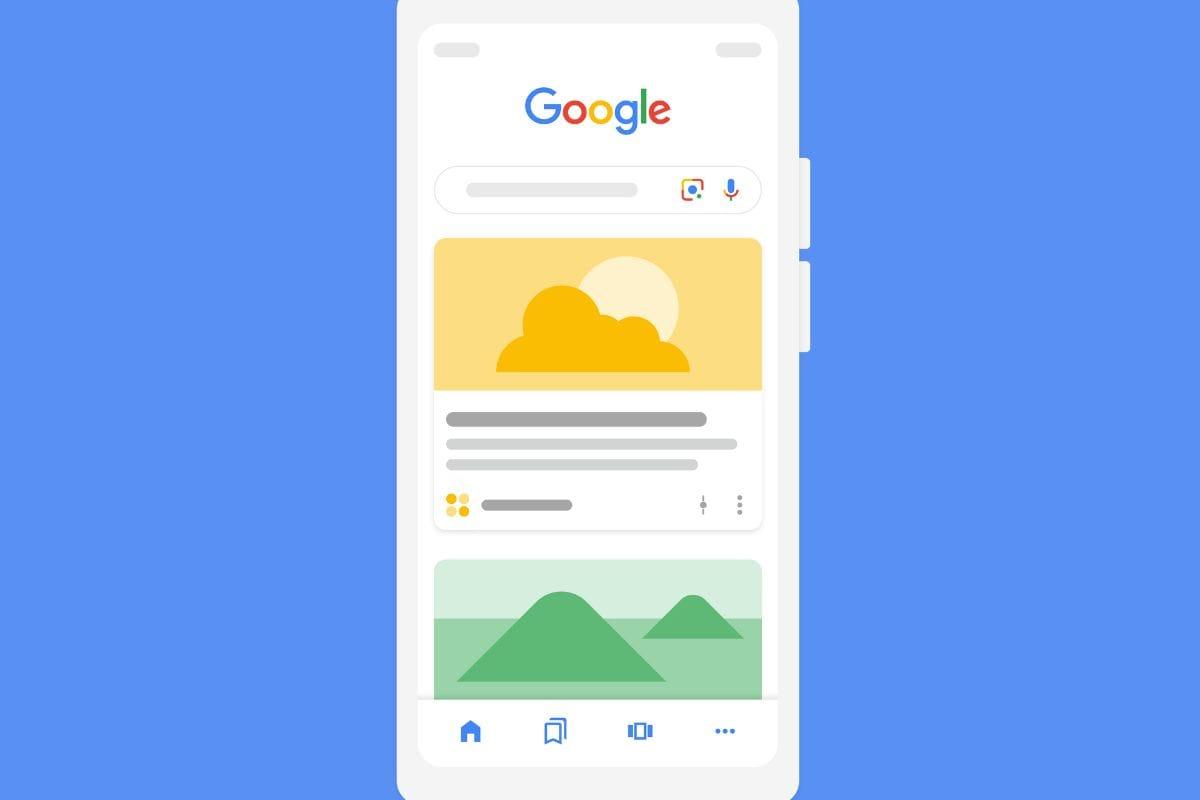
Source: Gadgets 360
How It Works
The new Discover cards display overlapping icons in the top-left corner, indicating the number of cited stories. Users can tap these icons to reveal a "More" sheet listing all contributing articles. The summaries provide a quick three-line preview, expandable with a "See more" option
2
.Google has included a prominent warning underneath the text, stating that the summaries are "Generated with AI, which can make mistakes"
1
.Implications for Publishers
This update has raised concerns in the publishing industry about potential further declines in website traffic and referrals. With features like Google's AI Overviews and AI Mode, users can now access information without visiting publisher websites directly
1
.Recent data from Similarweb shows that worldwide search traffic fell by 15% year-over-year as of June. The number of news searches resulting in no click-throughs to news websites has grown from 56% in May 2024 to nearly 69% in May 2025
1
.Related Stories
Google's AI Integration Strategy
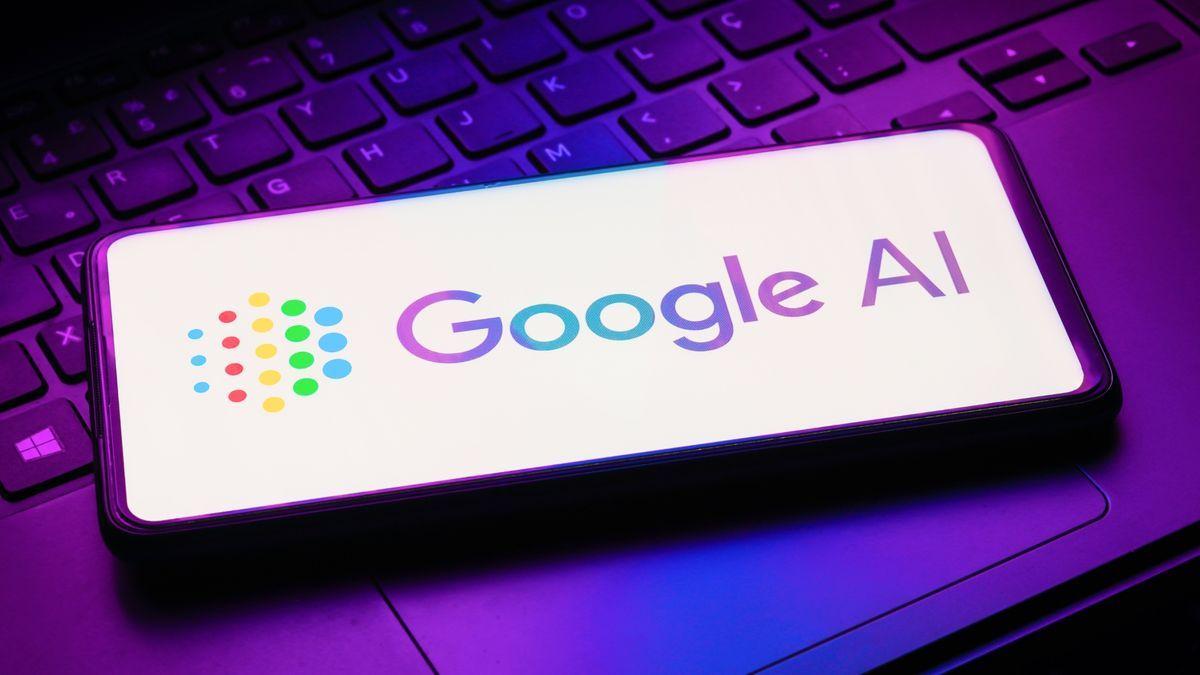
Source: Tom's Guide
This move is part of Google's broader strategy to integrate AI across its products. The company has been aggressively rolling out AI-powered features, including AI Overviews, Audio Overviews, and AI Mode in Search
4
.A Google spokesperson confirmed that this is not a test but a US launch on iOS and Android. The feature will initially focus on trending lifestyle topics like sports and entertainment
2
.Publisher Responses and Adaptations
Some publishers have been experimenting with AI on their own sites, including The Wall Street Journal, Yahoo, Bloomberg, and USA Today. Startups like Particle are also entering the space, offering AI-powered news readers that summarize stories and provide additional context
1
.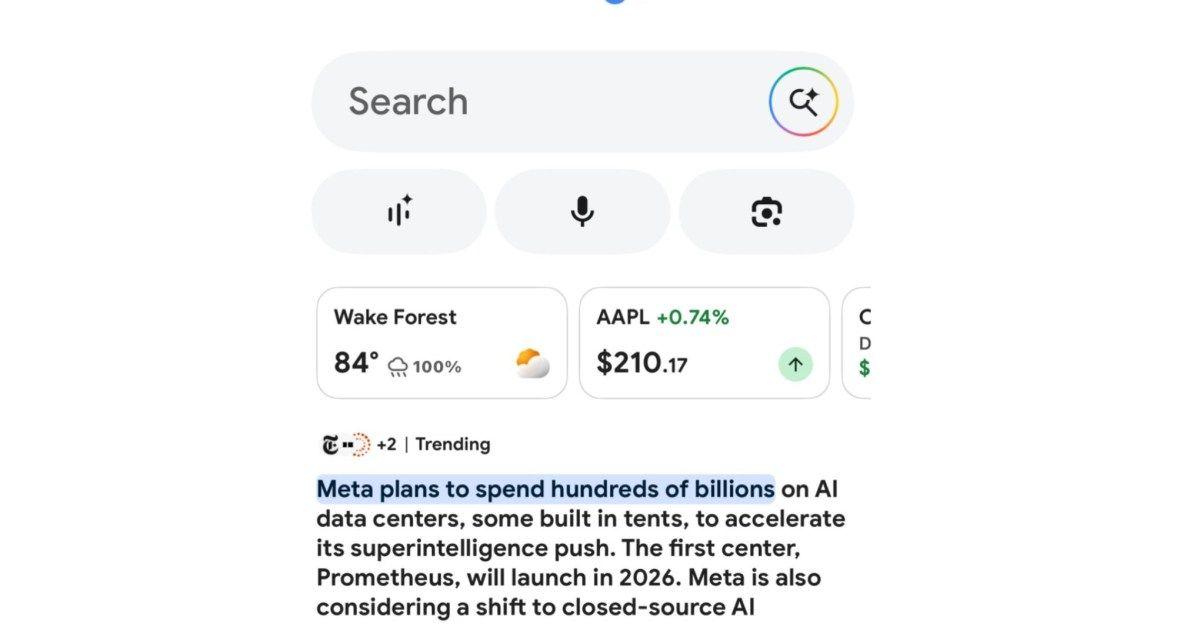
Source: The Verge
Google has attempted to address publisher concerns with the launch of Offerwall, a feature allowing publishers to generate revenue beyond traffic-dependent options. However, for many publishers, these tools may be arriving too late as traffic is already in steep decline
1
.References
Summarized by
Navi
[1]
[2]
[4]
[5]
Related Stories
Recent Highlights
1
Google launches Gemini 3 Flash as default AI model, delivering speed with Pro-grade reasoning
Technology

2
OpenAI launches GPT Image 1.5 as AI image generator war with Google intensifies
Technology

3
OpenAI launches ChatGPT app store, opening doors for third-party developers to build AI-powered apps
Technology



